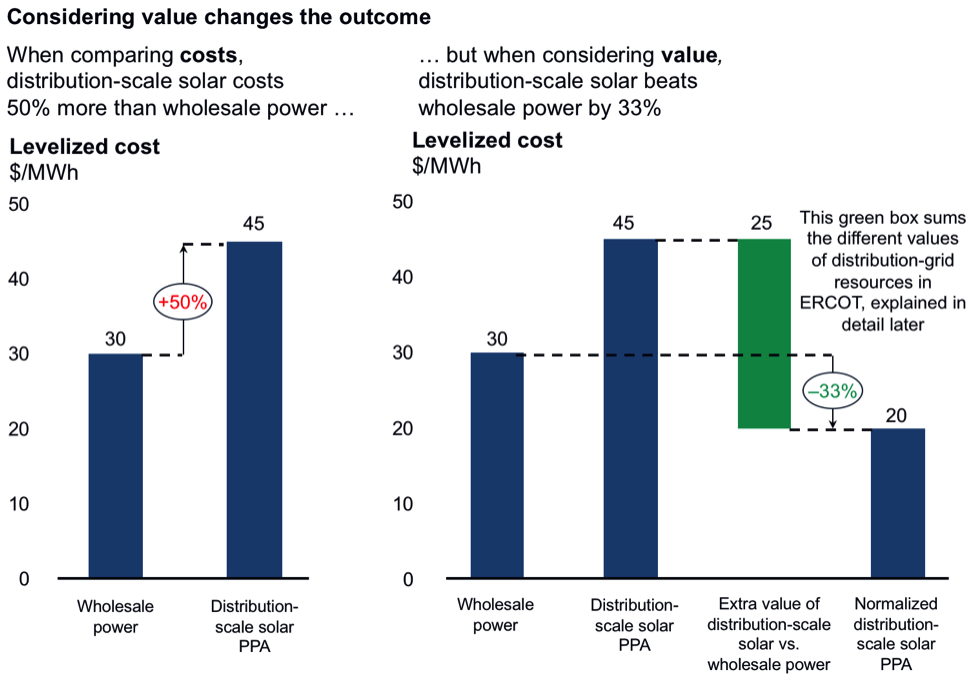submitted by Krae Van Sickle

Figure 1: Distribution-scale solar costs more than wholesale power, but it costs less if you fairly value all benefits
rmi.org - by Titiaan Palazzi Thomas Koch Blank - May 1, 2018
“New Record Set for World’s Cheapest Solar.” A headline like this makes for great social media fodder. The downward trend in renewables prices is fantastic—it’s the most important driver for the growth of solar and wind energy.
However, when your business or utility is comparing different energy projects, looking at cost alone is not enough. Even energy projects at very low costs can be “out of the money” if the value created by a project is less than its cost.
(CLICK HERE - READ COMPLETE ARTICLE)
Problem, Solution, SitRep, or ?:
Recent Comments